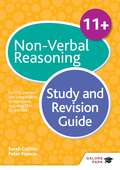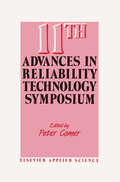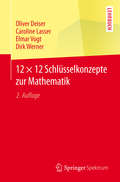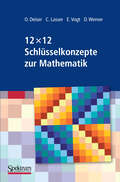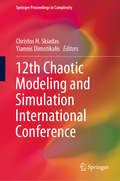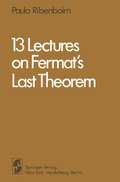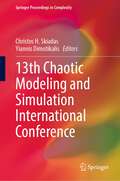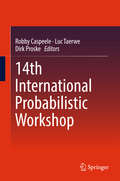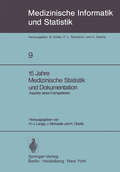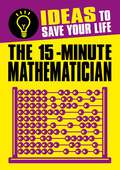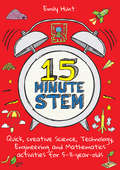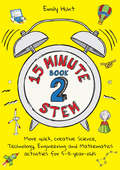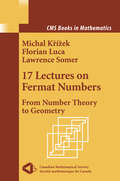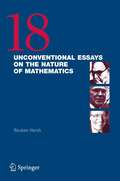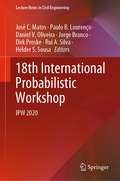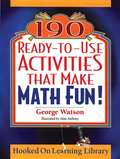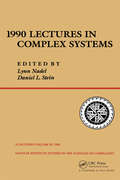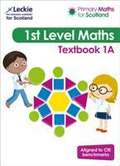- Table View
- List View
11+ Non-Verbal Reasoning Study and Revision Guide: For 11+, pre-test and independent school exams including CEM, GL and ISEB
by Peter Francis Sarah CollinsExam Board: ISEBLevel: 11 PlusSubject: Non-Verbal ReasoningFirst Teaching: September 2016First Exam: Spring 2017Secure the top marks in 11 plus independent school entrance exams and pre-tests and a better chance at getting into their school of choice with this essential study and revision guide. Stretching content ensures that all the Non-Verbal Reasoning skills are thoroughly revised ahead of the exams.- Explains and tests the full range of question types and skills met in Non-Verbal Reasoning in exams- Prepares pupils for a wide range of independent school exams and pre-tests with challenging extension material- Builds on existing knowledge with clear cross-curricular links to English- Features helpful insight in to the exams, with examples, practical tips and advice- Prepares pupils for exam conditions with timed and levelled exam-style questions- Identifies strengths and weaknesses using 11 plus sample tests with detailed answer guidanceAlso available for 11 Plus Verbal Reasoning preparation: - Non-Verbal Reasoning Workbook Age 8-10 - Non-Verbal Reasoning Workbook Age 9-11 - Non Verbal Reasoning Workbook Age 10-12 - 11+ Non- Verbal Reasoning Practice Papers 1&2Revision Guides, Workbooks and Practice Papers are also available for Maths, English, Science and Verbal Reasoning on www.galorepark.co.uk
11th Advances in Reliability Technology Symposium
by P. ComerOn behalf of the Organising Committee of the 11th ARTS I would like to welcome all the delegates, session chairpersons and authors. I particularly welcome new delegates, delegates from mainland Europe and from other countries. At the time of the last symposium, our tenth anniversary, we looked back on the growth of the symposium and the support it had received from so many people. Not least was the support given by Mrs Ruth Campbell who, between this symposium and the last, has retired from the National Centre of Systems Reliability. The Organising Committee would hereby like to acknowledge a very special debt of gratitude, over many years, to Ruth. Our gratitude also goes to Dr A. Z. Keller of the University of Bradford, the Organising Committee Chairman at the 10th Symposium, our President for 11th ARTS and, since the beginning, a staunch supporter of the ARTS. Our thanks go to Mme A. Camino of Electricite de France for being our after-dinner speaker and to Mr A. J. Bourne for being our keynote speaker. Their speeches have been keenly anticipated. Behind the symposium, the detailed and hard work of the administrative staff of the National Centre of Systems Reliability continues even after it has ended. Our thanks go to them, particularly, and to the Universities of Liverpool, Manchester Institute of Science and Technology and Bradford for their consistent support to the symposium.
12 × 12 Schlüsselkonzepte zur Mathematik
by Oliver Deiser Caroline Lasser Elmar Vogt Dirk WernerWie ist ein Ring definiert, wann kann man Grenzprozesse vertauschen, was sind lineare Ordnungen und wozu benötigt man das Zornsche Lemma in der Linearen Algebra? Das Buch will seinen Lesern helfen, sich in der Fülle der grundlegenden mathematischen Definitionen zurecht zu finden und exemplarische mathematische Ergebnisse einordnen und ihre Eigenheiten verstehen zu können. Es behandelt hierzu je zwölf Schlüsselkonzepte der folgenden zwölf Themengebiete der Mathematik: GrundlagenZahlenZahlentheorieDiskrete MathematikLineare Algebra Algebra Elementare AnalysisHöhere Analysis Topologie und Geometrie NumerikStochastikMengenlehre und Logik Ein besonderes Augenmerk liegt auf einer knappen und präzisen, dabei aber nicht zu formalen Darstellung. Dadurch erlauben die einzelnen Beiträge ein fokussiertes Nachlesen ebenso wie ein neugieriges Kennenlernen.Das Buch ist geschrieben für Studierende der Mathematik ab dem ersten Semester und möchte ein treuer Begleiter und eine zuverlässige Orientierungshilfe für das gesamte Studium sein.Die 2. Auflage ist vollständig durchgesehen und um Literaturangaben ergänzt.
12 x 12 graph (tactile)
by Adrian FarnsworthThis page shows a square grid of squares with a labelled Y-axis.
12 x 12 graph (Tactile)
by Adrian FarnsworthThis page shows a square grid of squares with a labelled Y-axis.
12 x 12 Schlüsselkonzepte zur Mathematik
by Oliver Deiser Caroline Lasser Elmar Vogt Dirk WernerWie ist ein Ring definiert, wann kann man Grenzprozesse vertauschen, was sind lineare Ordnungen und wozu benötigt man das Zornsche Lemma in der Linearen Algebra? Das Buch will seinen Lesern helfen, sich in der Fülle der grundlegenden mathematischen Definitionen zurecht zu finden und exemplarische mathematische Ergebnisse einordnen und ihre Eigenheiten verstehen zu können. Es behandelt hierzu je zwölf Schlüsselkonzepte der folgenden zwölf Themengebiete der Mathematik: Grundlagen, Zahlen, Zahlentheorie, Diskrete Mathematik, Lineare Algebra, Algebra, Elementare Analysis, Höhere Analysis, Topologie und Geometrie, Numerik, Stochastik und Mengenlehre und Logik. Ein besonderes Augenmerk liegt auf einer knappen und präzisen, dabei aber nicht zu formalen Darstellung. Dadurch erlauben die einzelnen Beiträge ein fokussiertes Nachlesen ebenso wie ein neugieriges Kennenlernen. Das Buch ist geschrieben für Studierende der Mathematik ab dem ersten Semester und möchte ein treuer Begleiter und eine zuverlässige Orientierungshilfe für das gesamte Studium sein.
12 x 17 Grid (Tactile)
by Adrian FarnsworthThis page shows a rectangle of squares with labelled axis.
12 x 17 grid (tactile)
by Markeaton SchoolThis page shows a rectangle of squares with labelled axis.
12th Chaotic Modeling and Simulation International Conference (Springer Proceedings in Complexity)
by Christos H. Skiadas Yiannis DimotikalisGathering the proceedings of the 12th CHAOS2019 International Conference, this book highlights recent developments in nonlinear, dynamical and complex systems. The conference was intended to provide an essential forum for Scientists and Engineers to exchange ideas, methods, and techniques in the field of Nonlinear Dynamics, Chaos, Fractals and their applications in General Science and the Engineering Sciences. The respective chapters address key methods, empirical data and computer techniques, as well as major theoretical advances in the applied nonlinear field. Beyond showcasing the state of the art, the book will help academic and industrial researchers alike apply chaotic theory in their studies.
13th Chaotic Modeling and Simulation International Conference (Springer Proceedings in Complexity)
by Christos H. Skiadas Yiannis DimotikalisGathering the proceedings of the 13th CHAOS2020 International Conference, this book highlights recent developments in nonlinear, dynamical and complex systems. The conference was intended to provide an essential forum for Scientists and Engineers to exchange ideas, methods, and techniques in the field of Nonlinear Dynamics, Chaos, Fractals and their applications in General Science and the Engineering Sciences. The respective chapters address key methods, empirical data and computer techniques, as well as major theoretical advances in the applied nonlinear field. Beyond showcasing the state of the art, the book will help academic and industrial researchers alike apply chaotic theory in their studies.
14th International Probabilistic Workshop
by Robby Caspeele, Luc Taerwe and Dirk ProskeThis book presents the proceedings of the 14th International Probabilistic Workshop that was held in Ghent, Belgium in December 2016. Probabilistic methods are currently of crucial importance for research and developments in the field of engineering, which face challenges presented by new materials and technologies and rapidly changing societal needs and values. Contemporary needs related to, for example, performance-based design, service-life design, life-cycle analysis, product optimization, assessment of existing structures and structural robustness give rise to new developments as well as accurate and practically applicable probabilistic and statistical engineering methods to support these developments. These proceedings are a valuable resource for anyone interested in contemporary developments in the field of probabilistic engineering applications.
15 Jahre Medizinische Statistik und Dokumentation: Aspekte eines Fachgebietes (Medizinische Informatik, Biometrie und Epidemiologie #9)
by H. J Lange J. Michaelis K. ÜberlaThe 15-Minute Mathematician
by Anne RooneyMathematics is all around us. It governs how information is presented to us and how we understand it. It underpins all science and has thus been responsible for mankind's incredible progress throughout the ages. The 15-Minute Mathematician introduces the reader to the main ideas of mathematics. In an engaging Q&A format, Anne Rooney explains the philosophical arguments behind fascinating mathematical questions, such as:• Why do we have negative numbers?• How straight is a straight line?• Is it a risk worth taking?• What did the Babylonians ever do for us?Dip inside to discover the miraculous ways that mathematics effects everyday life.
15-Minute STEM: Quick, creative science, technology, engineering and mathematics activities for 5-11-year-olds
by Emily HuntEmily Hunt’s 15-Minute STEM: Quick, creative science, technology, engineering and mathematics activities for 5–11-year-olds offers an exciting collection of 40 tried-and-tested, easy-to-resource STEM activities designed to engage and inspire young learners. From caring for our environment to the digital revolution, the demand for STEM skills is huge and is only set to grow. STEM is therefore an important priority area in modern education, leaving many teachers and parents asking questions such as ‘How do I fit STEM education into my day?’ and ‘What kind of activities should I be exploring?’ Enter 15-Minute STEM with the answers … This innovative resource has been designed to reassure teachers and parents that they don’t need to be experts to deliver high-quality STEM education. Each of the 40 activities includes step-by-step instructions, takes just 15 minutes to complete and can be resourced from everyday materials found in the classroom or at home. This means that, with minimal preparation, teachers can slot these cross-curricular activities into an otherwise busy day, broadening their pupils’ learning at no cost to their focus on core curriculum areas. The activities make connections to real-world scenarios, helping children to understand how their learning is relevant to their future, and have been linked to conceptually similar STEM-related careers – all of which are individually profiled in a glossary at the back of the book. The practical, problem-solving element of each activity offers a great way for children to develop important soft skills such as creativity, critical thinking and spatial awareness. Accompanying instructions are framed and phrased in a way that encourages the children to lead the learning and exploration – allowing the supervising adult to take a more hands-off, facilitative approach – and opportunities for further investigation are provided in order to broaden the learning focus and extend the tasks beyond 15 minutes. Hand-drawn illustrations and full colour photographs are also included alongside each activity to give an idea of what the end results might look like. Suitable for both teachers and parents. Activities include: Arctic Engineering: Why are igloos built in a dome shape? Fireworks in a Jar: What happens when we mix fluids of different densities? Marble Run Mayhem: What happens to a marble as it moves through a marble run? Rainbow Walking Water: How does water get from the roots of plants to the leaves? Spoon Sound Waves: How can we change the pitch of sound?
15-Minute STEM Book 2: More quick, creative science, technology, engineering and mathematics activities for 5-11-year-olds
by Emily HuntEmily Hunt's 15-Minute STEM Book 2: More quick, creative science, technology, engineering and mathematics activities for 5-11-year-olds offers a stimulating selection of easy-to-resource STEM activities designed to engage and inspire young learners. Like most teachers and parents, you probably recognise STEM as being an important priority area for modern education. You may, however, be wondering: What does STEM education look like for young learners? How do I get children excited about STEM education? How can children learn STEM skills in just 15 minutes? What equipment do I need to teach STEM activities? Enter 15-minute STEM with the answers! Full of engaging and practical ideas, this innovative resource builds on the success of Emily's 15-Minute STEM (ISBN 978-178583335-9) and reassures teachers and parents that they don't need to be experts to deliver high-quality STEM education. Each of the 40 activities includes step-by-step instructions, takes just 15 minutes to complete and can be resourced from everyday materials found in the classroom or at home. This means that, with minimal preparation, teachers and parents can slot these cross-curricular activities into an otherwise busy day - simultaneously broadening children's learning and piquing their curiosity about the world around them. Accompanying instructions are phrased in a way that encourages the children to lead the learning and exploration, and opportunities for further investigation are provided in order to broaden the learning focus. Hand-drawn illustrations and full colour photographs are also included alongside each activity to give an idea of what the end results might look like. The activities make connections to real-world scenarios and have been linked to conceptually similar STEM-related careers - all of which are individually profiled in a glossary at the back of the book. The practical, problem-solving element of each activity offers a great way for children to develop important soft skills such as creativity, critical thinking and spatial awareness. Suitable for both educators and parents of young children.
17 Lectures on Fermat Numbers: From Number Theory to Geometry (CMS Books in Mathematics)
by Michal Krizek Florian Luca Lawrence SomerThe pioneering work of Pierre de Fermat has attracted the attention of mathematicians for over 350 years. This book provides an overview of the many properties of Fermat numbers and demonstrates their applications in areas such as number theory, probability theory, geometry, and signal processing. It is an ideal introduction to the basic mathematical ideas and algebraic methods connected with the Fermat numbers.
18 Unconventional Essays on the Nature of Mathematics
by Reuben HershCollection of the most interesting recent writings on the philosophy of mathematics written by highly respected researchers from philosophy, mathematics, physics, and chemistry Interdisciplinary book that will be useful in several fields—with a cross-disciplinary subject area, and contributions from researchers of various disciplines
18th International Probabilistic Workshop: IPW 2020 (Lecture Notes in Civil Engineering #153)
by José C. Matos Paulo B. Lourenço Daniel V. Oliveira Jorge Branco Dirk Proske Rui A. Silva Hélder S. SousaThis volume presents the proceedings of the 18th International Probabilistic Workshop (IPW), which was held in Guimarães, Portugal in May 2021. Probabilistic methods are currently of crucial importance for research and developments in the field of engineering, which face challenges presented by new materials and technologies and rapidly changing societal needs and values. Contemporary needs related to, for example, performance-based design, service-life design, life-cycle analysis, product optimization, assessment of existing structures and structural robustness give rise to new developments as well as accurate and practically applicable probabilistic and statistical engineering methods to support these developments. These proceedings are a valuable resource for anyone interested in contemporary developments in the field of probabilistic engineering applications.
190 Ready-to-Use Activities That Make Math Fun! (J-B Ed: Ready-to-Use Activities #87)
by George WatsonThis unique resource provides 190 high-interest, ready-to-use activities to help students master basic math skills— including whole numbers, decimals, fractions, percentages, money concepts, geometry and measurement, charts and graphs, and pre-algebra— for use with students of varying ability levels. All activities are classroom-tested and presented in a variety of entertaining formats, such as puzzles, crosswords, matching, word/number searches, number substitutions, and more. Plus, many activities include "Quick Access Information" flags providing helpful information on key concepts.
1990 Lectures In Complex Systems
by Lynn Nadel Daniel I. SteinAn excellent series presenting top lecturers from the best institute for complex systems. Topics covered include: stochastic processes; fluid flow; pattern formation; information-based complexity; motor system problems; and the nature of adaptive change.
1990 Lectures In Complex Systems
by Lynn Nadel Daniel I. SteinAn excellent series presenting top lecturers from the best institute for complex systems. Topics covered include: stochastic processes; fluid flow; pattern formation; information-based complexity; motor system problems; and the nature of adaptive change.
1cm grid (tactile)
by Adrian FarnsworthThis page shows a blank grid made of one centimetre squares.
1cm Grid (Tactile)
by Adrian FarnsworthThis page shows a blank grid made of one centimetre squares.
1st Level Maths: Textbook 1A (Primary Maths For Scotland Ser. (PDF))
by Craig Lowther Antoinette Irwin Carol Lyon Kirsten Mackay Felicity Martin Scott Morrow Leckie LeckiePrimary Maths for Scotland Textbook 1A is the first of 3 first level textbooks. These engaging and pedagogically rigorous books are the first maths textbooks for Scotland completely aligned to the benchmarks and written specifically to support Scottish children in mastering mathematics at their own pace. Primary Maths for Scotland Textbook 1A is the first of 3 first level textbooks. The books are clear and simple with a focus on developing conceptual understanding alongside procedural fluency. They cover the entire first level mathematics Curriculum for Excellence in an easy-to-use set of textbooks which can fit in with teacher’s existing planning, resources and scheme of work.
